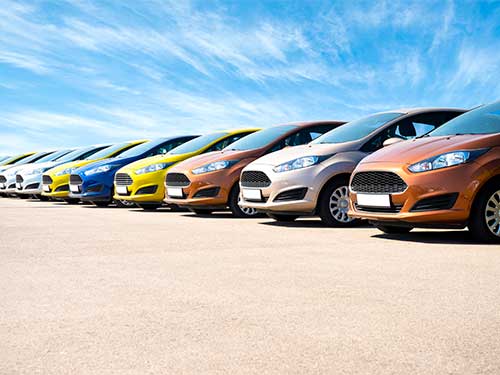In the previous installments of our series on distracted driving, we examined the dangers involved in texting while driving and some of the other common forms of hazardous distractions, including eating, smoking, and adjusting climate and audio controls and other devices, that account for thousands of accident fatalities every year.
Now it’s time to consider a possible solution, courtesy of the major advances that have been made in recent years in auto safety technology. As our cars get smarter, is there a chance they could actually help save us from dumb driving behavior?
Granted, it’s a strange question. Many would contend that technology is one reason we’re in this situation, in which nearly one out of ten of all fatal traffic accidents is blamed on distracted driving. If we didn’t have so many marvelous pieces of technology so readily at hand — satellite radio, a navigation system, a cell phone, and so on —we wouldn’t be so distracted in the first place.
But there’s another way to look at the problem. Although technology frequently gets a bad rap, it actually plays a fairly minor role in distracted driving crash data; even cell phones, which get the brunt of the blame, have been linked to only 14 percent of all “distracted-affected” fatal crashes. The real issue is not the technology on hand but bad decisions by drivers about where to focus their attention. To the extent that new technology makes driving safer by reducing the chances of human error, it can play an important role in reducing distracted-driving fatalities.
INNOVATIONS THAT HELP AVOID CRASHES
The evolution of sophisticated sensor technology now provides many aids that can warn you of driver fatigue or inattention, anticipate possible collisions, and even lend a hand in tight parking challenges. Consider these marvels:
- Automatic braking. Chief among crash avoidance systems is this feature, which detects obstacles ahead and reduces speed, giving the driver extra time to adjust to the situation. While not flawless, the systems can substantially reduce the severity of a collision, if not avoid it altogether. It’s expected that automatic braking systems will become standard on all vehicles, possibly as early as 2025.
- Backup cameras and blind spot sensors. Rearview monitoring technology has become essential on all new cars and trucks. Many drivers are still getting used to the new devices, but they’re expected to cut down on the number of accidents (and especially child fatalities) that occur because drivers can’t see what’s behind their rear bumper or lurking in a blind spot.
- Lane detection. In short order, automakers have gone from developing a system that detects lane markers and beeps or honks if you appear to be veering out of your lane (lane departure warning), to one that steers the car back into the lane (lane keep assist), to a system that actively keeps the car centered in its lane (lane-centering assist). Although the systems are not foolproof, they can be extremely useful in alerting fatigued or distracted drivers that they’re straying from the right path.
- Park assist. First introduced to the US market a decade ago, “intelligent parking systems” are now available on various Toyota and Lexus models. The systems utilize the car’s backup camera and collision sensors to safely and effectively parallel park, with some basic cooperation from the driver.
- Adaptive technology. One of the drawbacks of traditional cruise control is that the driver has to remain vigilant about changing traffic conditions and deactivate the feature when vehicles ahead start slowing down. Adaptive cruise control automatically adjusts the speed in response to what the sensors are detecting around your car. Other innovations include adaptive headlights that adjust to changing road conditions, such as sharp curves, in order to provide proper illumination.
- Driver monitoring software. One intriguing (or disturbing) innovation in the development of semi-autonomous cars is the addition of cameras and facial recognition software that monitors the driver (or “backup driver”) – and sounds an alert if it appears that the driver’s eyes aren’t on the road. Call it a distracted driving alarm.
THE LIMITS OF TECHNOLOGY
As we’ve opined before in this space, we still appear to be years away from a viable self-driving car. Ironically, one of the tougher hurdles is that even the most sophisticated semi-autonomous vehicle requires some attention from its human operator — and there have been a series of incidents in which the “backup driver” has been distracted, leading to a crash.
So while the new safety features can’t hurt, it’s difficult to envision a day when technology will totally erase the issues surrounding distracted driving. Despite all the technology that money can buy, it’s still a good idea to keep your attention focused on the road ahead.
THE CAR ACCIDENT LAWYERS AT FDAZAR
For more than thirty years the car accident attorneys at Frank Azar Car & Truck Accident Lawyers have helped thousands of injured people obtain complete and timely compensation for their losses. Our proven track record and expertise have allowed us to grow into the largest personal-injury law firm in Colorado, with offices in Denver, Aurora, Thornton, Fort Collins, Greeley, Grand Junction, Colorado Springs, and Pueblo. If you’ve been injured in a car, truck, or motorcycle accident, you may be entitled to compensation. Please call the car accident attorneys at FDAzar day or night at 720-372-2824 or contact us here for a free consultation and no-obligation evaluation of your case.




